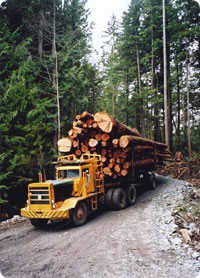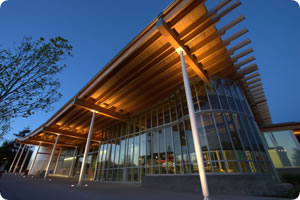Forest Management
 Canada’s resource managers practice sustainable forest management to maintain and enhance the long-term health of natural forest ecosystems while providing environmental, economic, social and cultural opportunities for present and future generations.
Canada’s resource managers practice sustainable forest management to maintain and enhance the long-term health of natural forest ecosystems while providing environmental, economic, social and cultural opportunities for present and future generations.
The country’s forests are 90% publicly owned and managed by the government on behalf of all Canadians. As a result, the Canadian forest industry operates under some of the toughest environmental laws anywhere in the world, and these laws are strictly enforced.
Canada has more than 347 million hectares of forest and other wooded lands, representing 9% of the world’s forest cover. In 2018, the harvested area represented 0.2% of the total area of forest land, and by law, all public lands that are harvested must be successfully regenerated. Today, Canada retains 91% of its original forest cover, more than any other country, and its rate of deforestation has been virtually zero for more than 20 years.
For further information:
www.sfmcanada.org
Certification
 Forest certification is an important tool used by forest companies, governments and buyers around the globe to ensure that forest products originate from legal and sustainable sources. In third-party certification, independent auditors review forest operations for compliance with standards that address environmental, social and economic concerns. No other construction material has the same rigorous review of its extractive processes as wood.
Forest certification is an important tool used by forest companies, governments and buyers around the globe to ensure that forest products originate from legal and sustainable sources. In third-party certification, independent auditors review forest operations for compliance with standards that address environmental, social and economic concerns. No other construction material has the same rigorous review of its extractive processes as wood.
Canada has the largest independently certified area of forest in the world. 77% of Canada’s managed Crown forest land is certified to third-party standards of sustainable forest management. Approximately 10% of the world’s forests are independently certified, and 40% of these certified lands are in Canada. Circa 183 million hectares of forest land in Canada are certified by one of three credible third-party programs, the Canadian Standards Association, Sustainable Forestry Initiative and Forest Stewardship Council, the first two of which are embraced by the Programme for the Endorsement of Forest Certification schemes, while all are approved by the UK government’s Central Point of Expertise on Timber Procurement.
Carbon Footprint
 Wood products sequester more carbon dioxide than is emitted during harvesting, transportation, and manufacturing. This means wood products actually have a negative greenhouse gas footprint! Wood is a natural choice when it comes to climate change because:
Wood products sequester more carbon dioxide than is emitted during harvesting, transportation, and manufacturing. This means wood products actually have a negative greenhouse gas footprint! Wood is a natural choice when it comes to climate change because:
- Wood products continue to store the carbon sequestered by trees, keeping it out of the atmosphere. When trees are converted into wood products, such as furniture and homes, much of the sequestered carbon is stored in those products indefinitely—which keeps it out of the atmosphere. A wood product will hold the carbon for the duration of its lifetime, and even longer if the product is later recycled for another use.
- Using more wood in building results in less fossil fuel consumption and fewer greenhouse gas emissions. Life cycle assessment studies show that using wood instead of energy-intensive materials such as steel, concrete or plastics significantly reduces greenhouse gas emissions, and will help decrease reliance on fossil fuels. Building with wood is an environmentally responsible choice.
- Wood products are durable and adaptable. After decades or even centuries of use, wood buildings can be easily adapted or deconstructed and reused, which means they can continue to store carbon indefinitely. The world is full of examples of ancient, wood-frame buildings that remain structurally sound. Extended service life is one of the major advantages wood offers as a building material.
If it were possible to purchase locally grown timber of the same quality and range of species as is available from around the globe, all in sufficient quantities, then surely it would make sense to do so. The fact of the matter is that the UK is a small and densely populated country, and to meet its needs it has had to import wood from some 80 countries over a period many centuries. The wealth of wood types, each with unique combinations of properties, has enabled designers over the centuries to achieve their creative potential.
For many years now the UK has imported wood from Canada’s east coast, requiring that it be shipped across the Atlantic Ocean, while a proportion travels approximately 8,700 nautical miles from Canada’s west coast. The carbon dioxide generated moving western red cedar from Vancouver to Liverpool amounts to approximately 378g of CO2 per kg of wood, just over a third of the weight of the material and equal to about 25% of the CO2 sequestered in the wood itself, so the wood is still ‘in credit’ by 75% after the journey. And the replanted seedlings carry on sequestering even more CO2! Just by way of comparison, to get 35g of cheese and onion flavoured crisps into your mouth, Walkers have estimated that 70g of CO2 are generated – twice the weight of the crisps!

